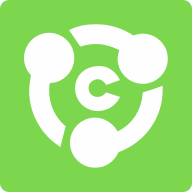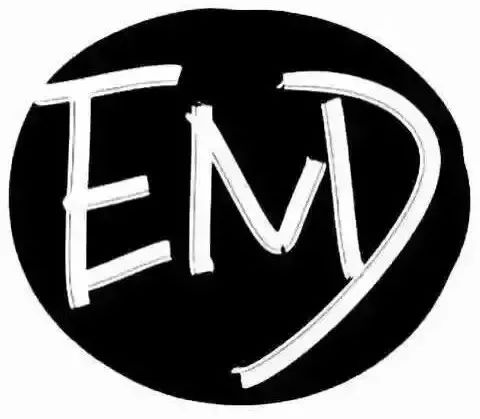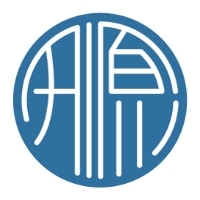Click above“ Kaiyuan Cooperative ”Follow us

|Reprinted from: Huawei developer community
|Editor in charge: Corrie
The rapid development of information technology represented by the Internet has had a tremendous impact on the entire economic system. On the one hand, the development of information technology makes the accumulation and dissemination of knowledge more rapid and knowledge explosive growth; On the other hand, it makes it easier to obtain information, the intensity of information exchange increases gradually, and the information cost is lower and lower, thus reducing the transaction cost in the entire economic system. The development of information technology is gradually changing the traditional economic system through the above two roles, leading to institutional changes in the economic system and many new economic phenomena, such as new business models, new industrial forms, new production methods, etc. Open Source Software (hereinafter referred to as OSS) is a typical example.
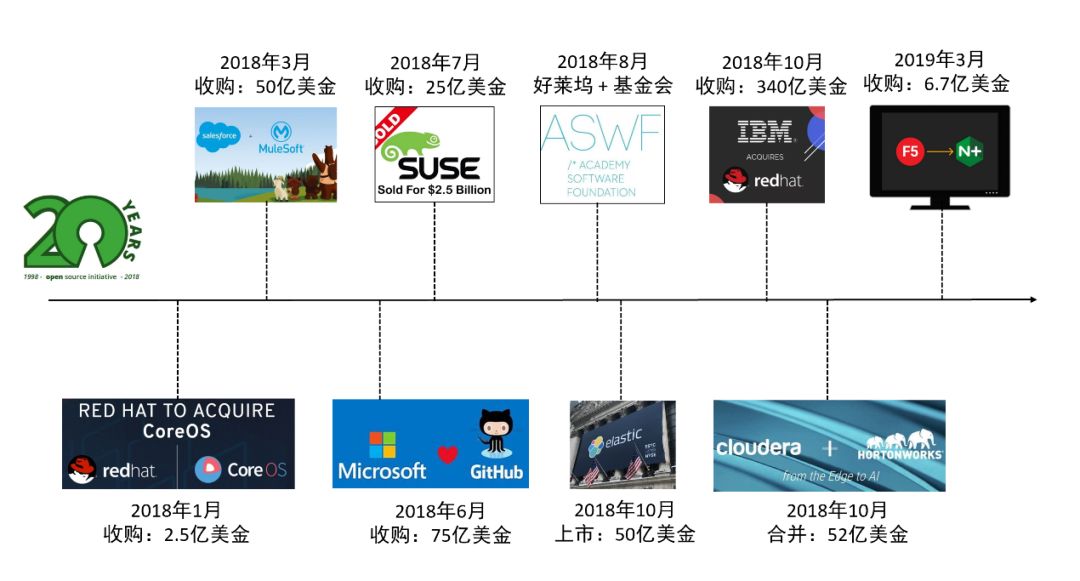
Since the end of the 20th century, OSS has achieved remarkable success in both technology and business. Looking back on 2018, we witnessed a historic breakthrough in the commercial aspect of open source software:
IBM acquired the listed open source software enterprise Red Hat with 34 billion dollars, which is also a record acquisition in the history of commercial software.
Microsoft acquired GitHub, an open source collaboration platform, for $7.5 billion.
Salesforce acquired Mulesoft, a listed open source software company, for $6.5 billion.
Adobe acquired Magento, an open source software company, for $1.68 billion.
There are only six software enterprises with a market value of 100 billion dollars in the world, Microsoft, Oracle, SAP, Adobe, IBM and Salesforce
The success of OSS is a thought-provoking phenomenon. A little analysis of this phenomenon from the perspective of economics can immediately feel the unusual features of this phenomenon.
First of all, OSS, as a pure public product, is neither provided by the public sector nor produced by the private sector through commercial activities, but voluntarily provided by the private sector without any remuneration. The traditional theory of public goods supply believes that because of the free rider problem, the public goods voluntarily provided by the private sector are always insufficient. However, in the production of OSS, this classic assertion is challenged. Millions of people scattered around the world volunteered their time and skills to participate in the development of OSS, and developed hundreds of thousands of OSS of various types. Therefore, we should not only ask how OSS attracts so many individuals to contribute freely to produce such a large number of public goods with amazing value?
Secondly, how did such a loose informal organization of OSS development community develop a large number of high-quality products in software, a product field with high technology content and complexity? According to the traditional production organization theory, software, as a highly complex product, especially needs strong management to ensure the precise organization and cooperation between developers, which can only be achieved by enterprises with considerable management level. However, OSS development organizations have also achieved this. The OSS development organization is a rather loose informal organization. Any member of the organization can freely join and withdraw from the organization according to their own wishes. Their composition spans the borders of countries, nations, cultures, and languages. Most of them have never met each other, and only communicate through the Internet. There is no authoritative command in the organization, There is no strict hierarchy. So how does such a loose informal organization effectively gather the strength of millions of people around the world to organize product development, effectively manage the continuous upgrading and innovation of products, and survive and grow under the threat of large commercial software companies with strong monopoly power?
Thirdly, although OSS and commercial software have completely different production organization modes and production purposes, their product functions are basically the same and they compete in the same market. OSS's property rights system and production organization mode appear in the industry as a new system, and will inevitably compete with traditional systems. What kind of impact will this new system have on the entire industry?
As tens of thousands of OSS have been developed and entered the software market, the business philosophy, organizational model and industrial structure of the entire software industry have been strongly impacted.
The author has a strong interest in this, and has conducted a preliminary study on the economic and social principles behind OSS. However, due to many research fields involved, the research is not sufficient, and there are still many aspects worth deepening.
What are the reasons and driving forces for the emergence and development of open source software?
What are the impacts of open source software on the IT industry, and what will happen to the industrial structure?
What organizational characteristics does the open source software community have? What is the organization of its production? How is production carried out?
What kind of enlightenment does it bring to us?
The whole article will be divided into three parts: macro, meso and micro:
Analyze the causes and dynamics of open source software on three levels
Analyze the impact of open source software on the industry at the meso level
Analyze the organizational characteristics and production mode of the open source software community at the micro level
This chapter gives priority to introducing the definition and development stages of open source software
What is open source software?
Before starting the analysis, we will briefly introduce the background of open source software and some conceptual problems that are easy to confuse.
Open source software can be divided into narrow sense and broad sense In a broad sense, open source software refers to computer software whose source code is open and which allows anyone to learn, copy, modify, and redistribute. Open source software in a narrow sense refers to open source software that conforms to the definition of OSI (Open Source Initiative)
Easily cause confusion and clarify concepts related to open source software
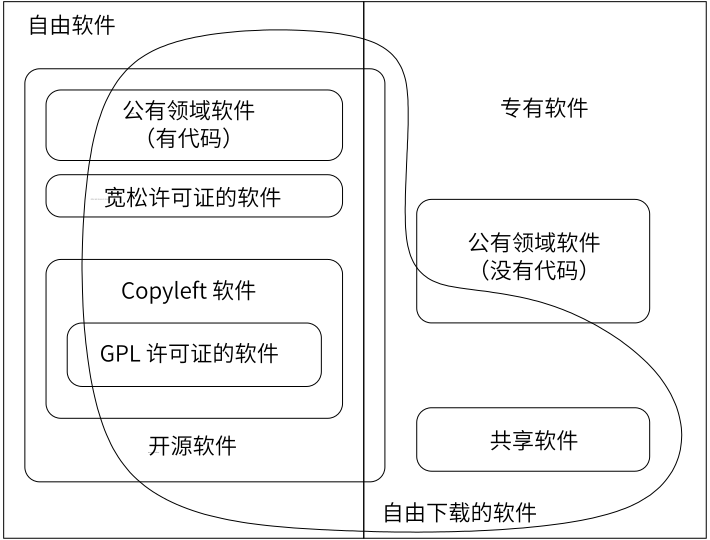
Free and open source software (FOSS, or Free/Libre and open source software, FLOSS) is a kind of computer software that can be classified as both free software and open source software. That is, anyone is authorized to freely use, copy, research and change the software in any way, and its source code is open and shared, so people are encouraged to volunteer to improve the design of software. Compared with proprietary software, this kind of software is subject to strict copyright restrictions, and its source code is usually not open to users
1. Software with open source code may not be "open source software"
Commercial software manufacturers, such as Microsoft, have launched the source code agreement of the government security plan for some products in the world, but users can only see the source code and cannot modify or use it, so it is not open source software.
To judge whether a software is open source software, the key is to see how the software license agreement stipulates the whole process of software use, release, replication and deduction.
2. Open source software is not public software
The public software expressly waives the copyright or the economic rights in the copyright expire. However, open source software is protected by copyright and must be used within the limits of copyright rules
3. Open source software is not equal to free software
Open source software is usually free to use, but not all free software is open source software
four
Free Software vs Open Source Software
Free software refers to software released under the GPL license agreement, which is more strictly defined than open source software. Free software is required to ensure that users can obtain real freedom to use the software, and it is not allowed to sell the software closed source after modifying the source code. Many OSI approved open source software does not meet the definition of free software.
License is the license of the software, which describes in detail the rights after obtaining the software, what operations can be performed on the software, and what operations are prohibited.
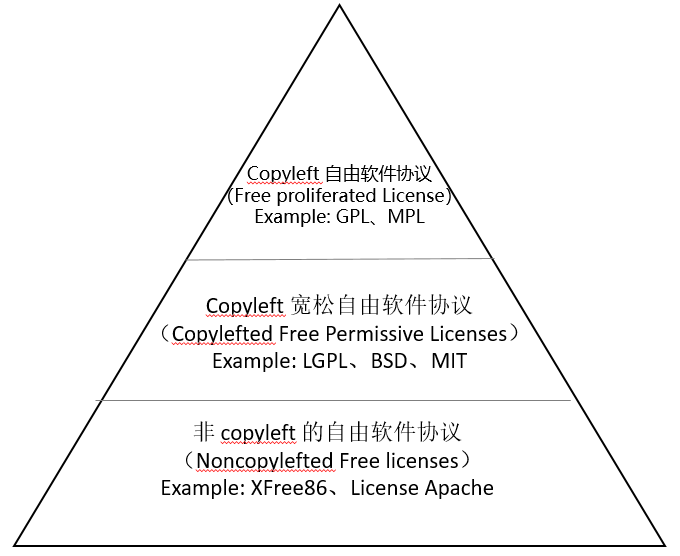
Open source software protocols generally fall into three categories:
1.Copyleft (Free proliferated licenses)
Copyleft software is a kind of free software. Its release terms can ensure that all copies of all its versions have more or less the same release terms
Copyleft is a general concept. There are many possible ways to write the copyleft release terms. Therefore, in principle, there can be many kinds of copyleft free software licenses. However, virtually all copyleft software uses GNU GPL. The two different copyleft licenses are usually incompatible, which means that it is illegal to directly merge the code using one license with the code using the other license; Therefore, people using the same copyleft license will benefit the community.
2. Copyleft Free Permissive Licenses
It is a type of free software license agreement terms with minimum requirements for the way of software distribution. Therefore, this license agreement will not guarantee that the derivative version of the used software will continue to remain in the form of free software.
When the software is forwarded (whether modified or not), the loose license agreement allows the redistributor to restrict others' access to the source code. Some well-known loose free software license agreements include MIT license and BSD license
3. Non copied Free Licenses
Non copyleft free software comes with a license to redistribute and modify from the author, as well as a license to add additional restrictions.
If a program is free but does not use the copyleft license, some copies or modified versions may not be free at all. The software company can compile the program and release the executable as a proprietary software product regardless of whether it is modified or not.
The nature of common property rights of open source software

The intellectual property right of software products should be a mixed property right. On the one hand, software algorithms, steps and ideas can be considered ideological and should be patented; On the other hand, some other elements of software, such as interface, language, code lines and copies of software products, can be regarded as expressive and should be copyrighted. At present, most countries attribute the property right of computer software to the scope of copyright.
In today's commercial software, due to the cumbersome patent application procedures and high-speed software innovation, the use of patent rights to protect intellectual property rights is relatively rare. The most widely used and considered effective means of property rights protection are mainly trade secrets, followed by copyright, and the joint use of the two means is more common.
Generally, software manufacturers use copyright to protect the object code of the commercial software they sell in the market from unauthorized use, that is, protect the exclusive right of "text (object code) expression" through copyright, and specify and emphasize it in the relevant clauses of the license. But copyright protection alone is far from enough. Because the essence of software is an instruction to perform a specific function, it is ideological, so if other competitors of the software manufacturer make partial modifications to the source code of the software, it can realize that although the same function is performed, the expression form is different from the original software, thus avoiding the restrictions of copyright law.
In order to protect the ideological innovation achievements in software, although patents can be applied, the time cost and financial cost of patent application make this method less feasible. Most software manufacturers finally adopt the method of trade secret, and close the source code of software to make it a trade secret of enterprises, so as to use the legal means of trade secret to ensure that their intellectual property rights of software are not infringed. This is the property protection status of most proprietary software.
OSS software follows a set of mechanisms called copyright. This mechanism uses the copyright mechanism to achieve the opposite purpose of copyright, that is, to protect the open and free rights of OSS by using the relevant legal means of the copyright system. The core of reverse copyright is the aforementioned open source software protocol
OSI (open source initiative) has ten terms for open source software:
Free re release
Source code disclosure
Allow Derived Works
Author Source Code Integrity
Cannot discriminate against any individual or group
No discrimination in any field
Issuance of license
Licenses cannot be specific to a product
Licenses cannot bind other software
Licenses must be technology independent
Through the analysis of the basic terms of OSS and the arrangement of the rights in the property rights they determine, we can clearly see that the developers and users of software have completely overlapping rights in the arrangement of the right to use, the right to revoke, the right to exclude, and the right to grant.
It is under the above property rights arrangement generated by OSS reverse copyright mechanism that program developers and users all over the world work together to develop and improve a large number of OSS through Internet and other communication tools. For OSS, an intellectual product jointly developed by the group, all members of the group can decide their input level according to their own will and ability, and use it without restrictions. This is a real shared property system.
Development history of open source software
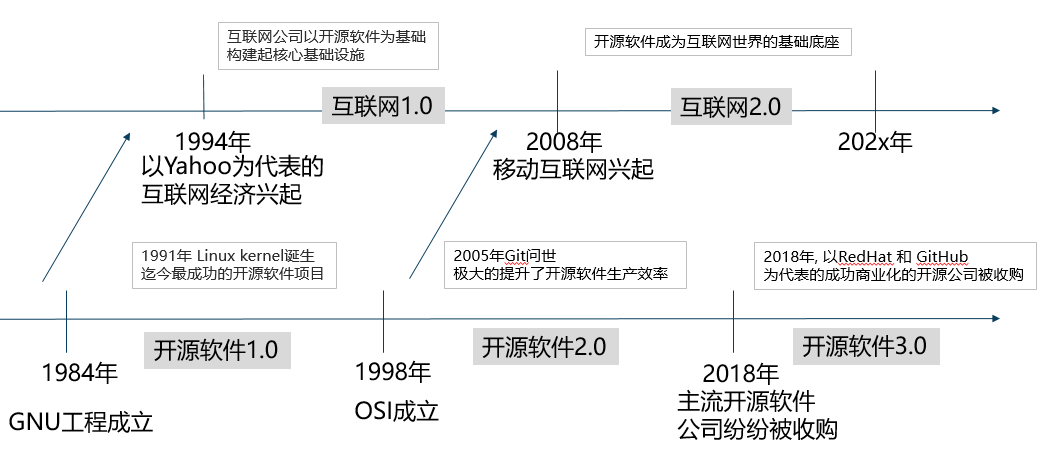
1970s~1998 - 1.0 free software period
In the early days of computer development, namely the 1960s and 1970s, computer users usually shared programs with others. At that time, the number of programs was very small, and most of the software was bundled and sold to users as an accessory part of the computer system. Due to the high price of computer equipment, the value of software programs was very low. At that time, software provided by many equipment manufacturers, even software developed by government funds, was allowed to be shared. The source code of the program was open and generally provided according to the needs of users. Because the software attached to the device is relatively simple and cannot fully meet the needs of work, computer users often use source code to improve the program to give full play to the role of the computer. Therefore, for the motivation of reciprocity, users will also provide improved software to other users for free. Therefore, it can be considered that software is open source at the beginning of its birth. With the decline in the price of computer hardware, the rapid popularization of computers and the emergence of computer networks, software has become more and more important, and the value of software has also been rapidly improved. As a result, in the 1980s, professional software companies were created to develop and sell software as a separate commodity. In order to ensure their commercial interests, these software companies have closed the source code of the software, so that computer users must pay a certain fee for using the software. At the same time, they have lost the right to modify the software according to their own needs.
Richard Stallman is determined to develop free software, the predecessor of open source software, to counter this trend.
Stallman founded the Free Software Foundation FSF in 1985, and started to lead the development of free software with open source code. At the same time, in order to ensure that anyone can freely obtain and use free software, Stallman has creatively established and developed a unique copyright system by using legal mechanisms. He added a standard license to the traditional software copyright, which enables creators who want to keep their developed software free to use this license to protect the right of free use of future users, prevent software from losing the right of free use for commercial purposes, and prevent manufacturers from using free software to privatize it.
During this period, it was mainly scholars and amateurs who developed software, and the whole trend was to "provide software for free". When working at the Free Software Foundation, we didn't know where the salary came from. At that time, there was no concept of business model. The funds behind the development of "free software" (if any) were provided in the form of university or enterprise research funding.
1998~2018 – 2.0 commercialization period
The popularity of the Internet in the mid-1990s greatly promoted the development of free software. The number of free software is growing rapidly. At the same time, some free software developers have developed a set of software development work methods that allow hundreds of volunteers all over the world to participate in the development of open source software through the Internet. The emergence of this set of methods has greatly enlarged the development capability of free software and made it possible to develop large-scale and complex free software.
However, the idea of free software did not immediately become mainstream, and the industry has always been suspicious of it.
Bruce Perens and Eric Steven Raymond (1998) believed that Stallman's word "free" could easily be understood as free, leading to hostility among commercial institutions. Therefore, they and others jointly established the Open Source Promotion Organization OSI to promote the open source movement. Although the open source movement has inherited the technical rules of the free software movement, it is different from the philosophy behind the free software movement. Compared with the political and philosophical thought that free software attaches importance to the traditional ideal idea of hackers, the open source movement attaches more importance to the improvement and improvement of the quality of the program itself. But in general, the difference between the two is not very big.
The concept of "open source code" advocated by Perens and others has been recognized in a wider range due to its dilution of social factors such as political beliefs and its emphasis on the characteristics of software itself. It has become a general term for all software with the condition of open source code, including free software.
Since this period, the real open source software business model has emerged, including Red Hat, MySQL, and many other commercial organizations that provide paid support and services on top of open source software. This is the first time that we have seen a viable economic model to support the sustainable development of these organizations.
The history of open source shows that its rise is due to the virtuous circle of technological and commercial innovation. In terms of technology, open source is the best way to create software, because it accelerates product feedback and innovation, improves the reliability of software, expands the scope of support, promotes adoption, and gathers technical personnel. Open source is a technology driven model, and these features have existed since the era of "free software". However, only when technological innovation and commercial innovation are combined can the potential of open source be fully realized. If there is no business model, such as paid support, open core and software as a service model, there will be no revival of open source.
Economic benefits create a virtuous circle. The more commercial innovations, the larger the developer community, which can stimulate more technological innovation, and then increase the economic incentives for open source.
2018~202x open source software - 3.0 open source is a part of every software company
Today, almost all large technology companies are developed on the basis of open source software. More and more companies are also building their own open source projects!
In the future, this virtuous circle will continue. Technically, AI, open source data and blockchain are some examples of emerging innovations. In business, open source is no longer Red Hat, Elastic, Databricks and Cloudera; It will at least become a part of every software company, and any other enterprise that uses open source as its stack. When we look at open source in this way, the market and possibility of open source software are much larger than we realize.
Introduction to Kaiyuan News Agency
The Open Source Society is a manufacturer neutral, volunteer and non-profit open source alliance organized by enterprises, communities and individuals at home and abroad who support open source in accordance with the principle of "contribution, consensus and co governance", aiming to jointly create a healthy and sustainable open source ecosystem and promote the Chinese open source community to become an active participant and contributor of global open source software. We focus on open source governance, international integration, community development and open source projects.
Related reading | Related Reading
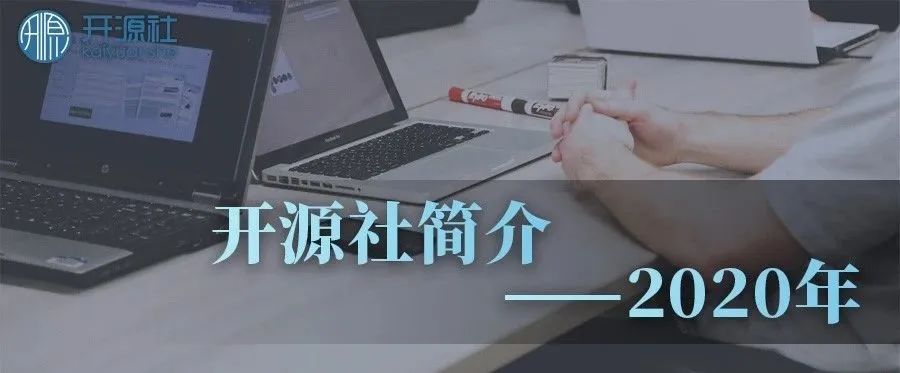
I'm Kaiyuan News Agency v2020

To Hackers | Gathering is a fire, scattering to make stars all over the sky

A table tells you the main differences and similarities between Mulan loose license version 2 (MulanPSL v2) and mainstream licenses in the industry
This article is shared from the WeChat official account Kaiyuan She.
In case of infringement, please contact support@oschina.cn Delete.
Participation in this article“ OSC Source Innovation Plan ”, welcome you to join us and share with us.






